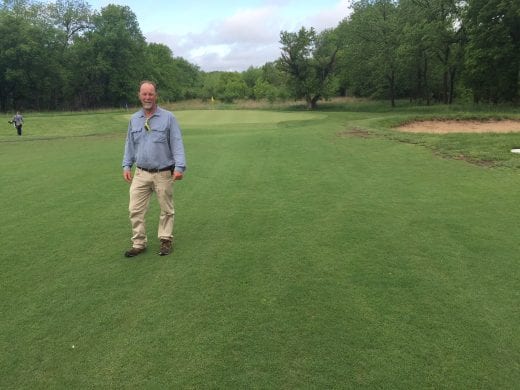
After severe cold, warm-season grasses have responded well and are generally experiencing good green up this spring. I have had no information regarding winter injury on bermudagrass or zoysiagrass. If you noticed any significant injury this spring, please reach out to me – I’d like to know. Air temperatures were very cold throughout the state between February 6 and 19th, reaching a low of -18 F in the eastern part of the state and in the Wichita area. There were differences in snow cover, however, and that can impact the level of insulation provided to the grasses. The lowest soil temperature at a 2-inch depth at the Olathe Horticulture Center was 29 F on February 15th. Winter injury becomes a greater concern if turfgrass crowns are elevated above the soil in thatch, or if there is no snow cover at all during extreme cold. The Wichita area had several inches of snow on the ground when the extreme cold occurred. I recently visited a new sports complex on which Latitude 36 bermudagrass was sodded late last summer, and no play occurred on the fields last year. Green up of those fields is looking very good (see picture above). Likewise, Northbridge and Latitude 36 bermudagrass in the Kansas City area have greened up well this spring. I have noticed some slow green up on an area of Riviera bermuda (seeded type) at our research center. Good green up of warm-season grasses may be due the fact that grasses were at the peak of acclimation (defined as the plant being physiologically prepared to tolerate extreme cold) when the cold temperatures arrived. There is greater risk of injury if grasses are not fully acclimated. This could occur with a late fall freeze, or when a short period of warmth in winter or early spring leads to some deacclimation (loss of tolerance), and then severe cold temperatures return when a front passes through.


